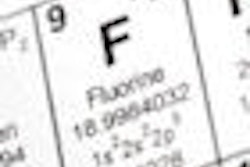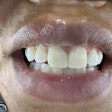In a study that the authors describe as lending credence to the idiom, "by the skin of your teeth," scientists from Saarland University Hospital report that the protective shield fluoride forms on teeth is up to 100 times thinner than previously believed (Langmuir, December 21, 2010, Vol. 26:24, pp. 18750-18759).
This raises questions about how fluoride really works and could lead to better ways of protecting teeth from decay, the researchers suggest in a press release.
Scientists long have known that fluoride makes enamel more resistant to decay. Some thought that fluoride simply changed the main mineral in enamel, hydroxyapatite, into a more decay-resistant material called fluorapatite.
But Frank Müller, PhD, and colleagues found that the fluorapatite layer formed in this way is only 6 nanometers (nm) thick. It would take almost 10,000 such layers to span the width of a human hair. That's at least 10 times thinner than previous studies indicated.
The scientists question whether a layer so thin, which is quickly worn away by ordinary chewing, really can shield teeth from decay, or whether fluoride has some other unrecognized effect on tooth enamel. They are launching a new study in search of an answer.
Copyright © 2010 DrBicuspid.com



















